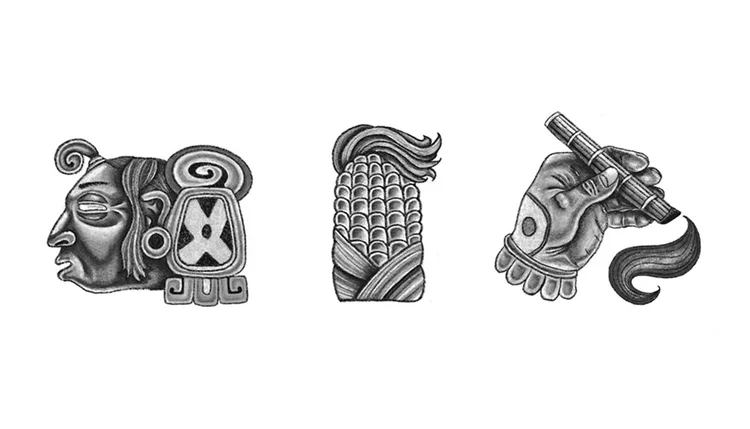Señora con Metate y Perro - 36” W x 25” H, Pencil on Painted Wood
This artwork was created with the intention of showcasing the traditional use of a metate, a stone grinding tool used for processing maize. Metate comes from the Náhuatl word “Metlatl.” The central figure is an Indigenous woman engaged in the act of grinding corn, a practice that has been passed down for generations. The metate in the drawing is depicted as a rectangular stone slab, accompanied by a mano, the handheld grinding stone used to crush and refine the maize into masa (corn dough). This meticulous process has been an essential part of Mesoamerican and Indigenous North American cultures for thousands of years.
The metate is typically made from volcanic stone, such as basalt, which provides a rough surface ideal for grinding grain of corn, cacao, seeds, and spices. Its design has remained largely unchanged since its first recorded use in Pre-Columbian times, highlighting its efficiency and cultural importance. In Mesoamerican societies, the metate was not just a kitchen tool but a symbol of sustenance and survival, playing a fundamental role in daily food preparation, particularly for making tortillas and tamales.
Metates can be found throughout Mexico, Guatemala, Belize, El Salvador, Honduras, Nicaragua, and Costa Rica, where maize has been the cornerstone of Indigenous diets and traditions for millennia. Archaeological findings suggest that metates have been used in Mesoamerica for over 6,000 years, demonstrating their deep connection to Indigenous heritage.
Beyond Mesoamerica, Native American tribes of North America also utilized metates, particularly in the Southwest among the Hopi, Navajo, and Pueblo peoples. These communities used similar grinding stones to process corn, acorns, and seeds, highlighting a shared tradition of food preparation across Indigenous cultures. Many metates found in the U.S. Southwest are still present in archaeological sites, showcasing their enduring legacy.
This drawing not only captures the physical act of grinding corn but also serves as a visual tribute to the resilience and ingenuity of Indigenous peoples. It honors the enduring tradition of maíz preparation and the cultural significance of the metate as a vital tool that has nourished generations across the Americas.
Métate, table à moudre le grain en forme de jaguar Culture Guanacaste Région de Nicoya, Costa Rica Fin de la période IV-Période V, 300-700 ap. J.-C.
Jaguar Stone Metate from Nicaragua. (300–700 CE).
Ceremonial Metate, Honduras; Maya, 10th–11th century
Metates from the Southwest - Arizona, New Mexico, 16th century
Metates from the Southwest - Arizona, New Mexico, 16th century






